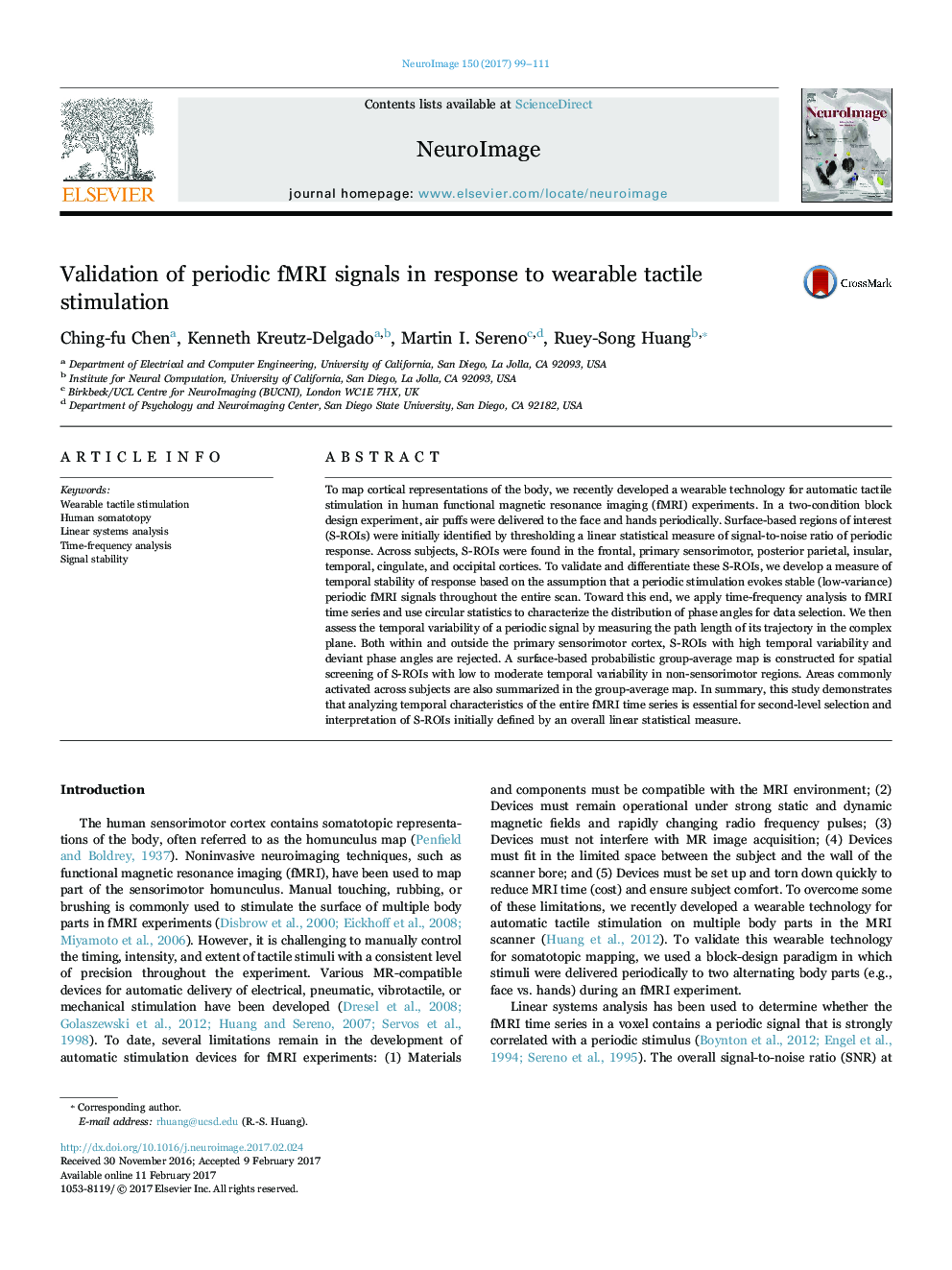| Article ID | Journal | Published Year | Pages | File Type |
|---|---|---|---|---|
| 5631628 | NeuroImage | 2017 | 13 Pages |
â¢MR-compatible wearable technology for tactile stimulation on multiple body parts.â¢Second-level data selection using time-frequency analysis and circular statistics.â¢Measuring temporal stability of periodic fMRI time series in the complex plane.â¢Surface-based regions of interest and probabilistic group-average maps.
To map cortical representations of the body, we recently developed a wearable technology for automatic tactile stimulation in human functional magnetic resonance imaging (fMRI) experiments. In a two-condition block design experiment, air puffs were delivered to the face and hands periodically. Surface-based regions of interest (S-ROIs) were initially identified by thresholding a linear statistical measure of signal-to-noise ratio of periodic response. Across subjects, S-ROIs were found in the frontal, primary sensorimotor, posterior parietal, insular, temporal, cingulate, and occipital cortices. To validate and differentiate these S-ROIs, we develop a measure of temporal stability of response based on the assumption that a periodic stimulation evokes stable (low-variance) periodic fMRI signals throughout the entire scan. Toward this end, we apply time-frequency analysis to fMRI time series and use circular statistics to characterize the distribution of phase angles for data selection. We then assess the temporal variability of a periodic signal by measuring the path length of its trajectory in the complex plane. Both within and outside the primary sensorimotor cortex, S-ROIs with high temporal variability and deviant phase angles are rejected. A surface-based probabilistic group-average map is constructed for spatial screening of S-ROIs with low to moderate temporal variability in non-sensorimotor regions. Areas commonly activated across subjects are also summarized in the group-average map. In summary, this study demonstrates that analyzing temporal characteristics of the entire fMRI time series is essential for second-level selection and interpretation of S-ROIs initially defined by an overall linear statistical measure.
